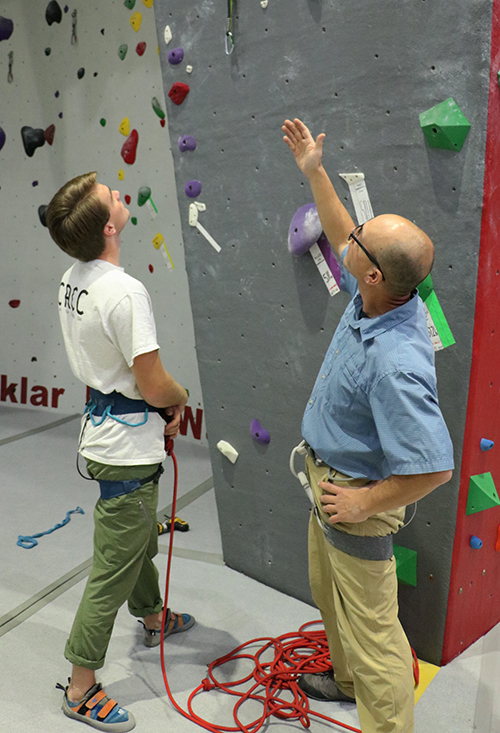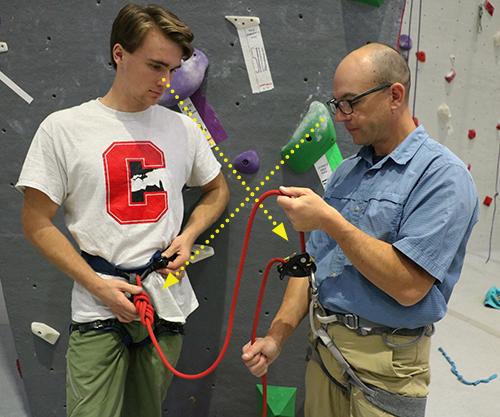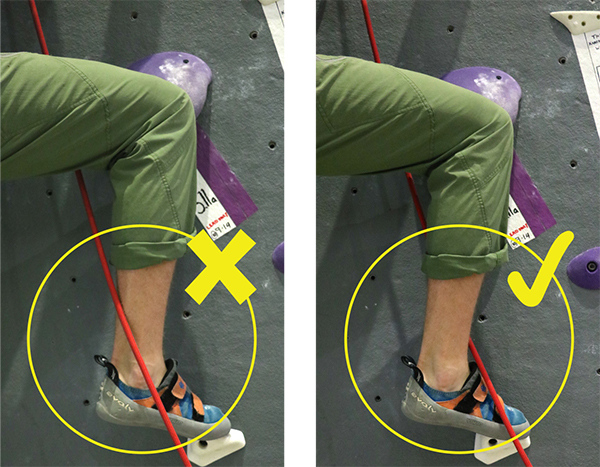Climbing Hazards and Taking Falls
Sport Lead climbers will have to adjust to some new techniques while climbing. Before the climb starts, lead climbers should learn to assess the route and their capabilities, scope out the clipping line, and anticipate where the most challenging aspects of the climb are located. When climbers and belayers discuss the strategy ahead of the climb, it helps belayers anticipate the kind of support needed throughout the climb, including the possibility of catching a lead fall at a critical moment.
Climbing Hazards
The most obvious hazard while lead climbing is falling, with the possibility of impacting the wall, your belayer, or another climber. Falling typically happens when you reach the limit of your ability to hang on to the wall or make the requisite move to advance. It can also happen accidentally, like when a critical hold spins. Some key skills that a lead climber can build up to reduce the likelihood of falling are developing their strength, power, and endurance, developing their ability to find rest from a variety of positions, and regularly downclimbing. Being able to make smooth and efficient clips also helps climbers save their energy for the work ahead. With the rope trailing below them, lead climbers must also take care to keep the rope between them and the wall and avoid getting tangled. Finally, it remains imperative to do a thorough partner check before leaving the ground.
Partner Check
In addition to checking each other's harness and the tie-in knot, the climber should verify that the rope has been flaked properly, and that the belayer's assisted braking device is loaded and functioning properly.
Leg Behind the Rope
If your leg, ankle, or heel are between the rope and the wall, you risk getting ensnared during a fall, which could flip you over or out of control. You should always be mindful to keep the rope between you and the wall. Traversing moves increase the possibility of this happening. Consider the direction of a potential fall and be sure the rope is not in the way. To fix this, pick your leg or foot up and swing it to the other side of the rope.
Taking Falls
Lead falls happen, and that's OK! You cannot take lead falls at LCC unless you are with an LCC certified instructor, or have become Lead Certified. To reduce the risk of injury, there are a few things you can do before and during a fall to stay relaxed and avoid tensing up:
-
Be aware of features below you, and potential swings, to anticipate any hazards.
- Remain flexible, with arms and legs bent.
- Exhale through your fall to further relax your body.
- Avoid pushing away from the wall, as this will make you swing back towards the fall for a more violent impact.
Next up: Slack Management and Catching Falls



